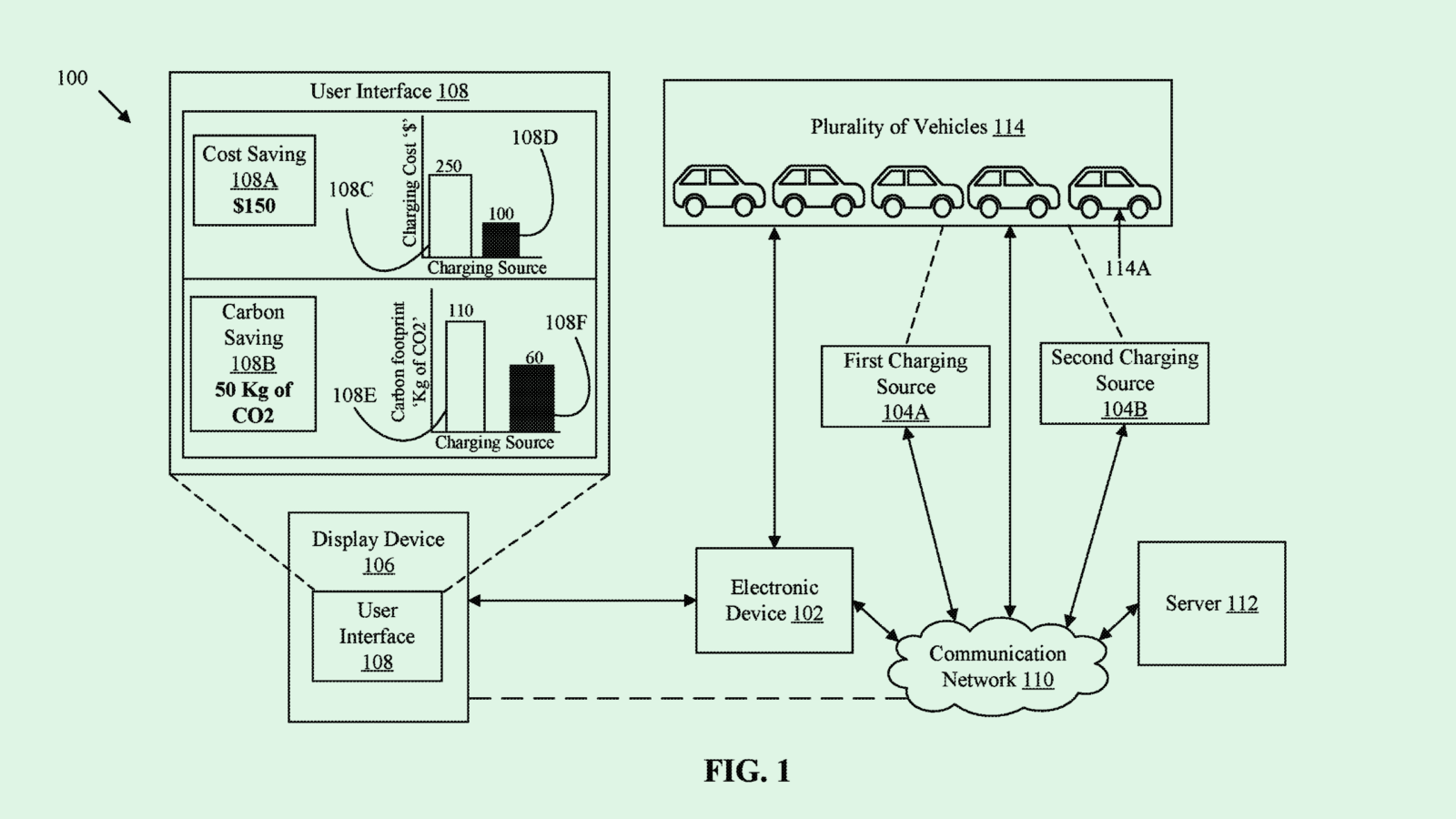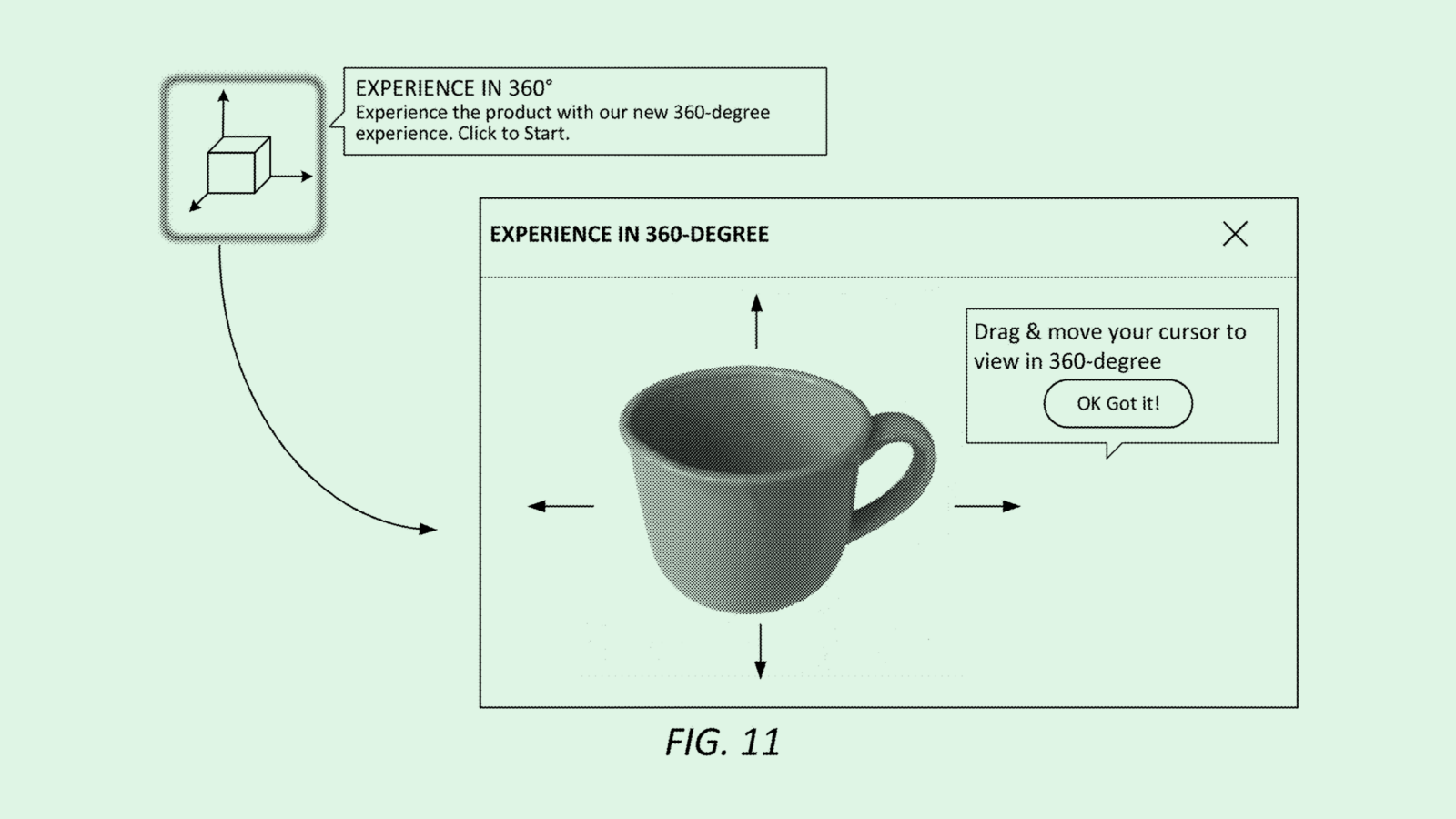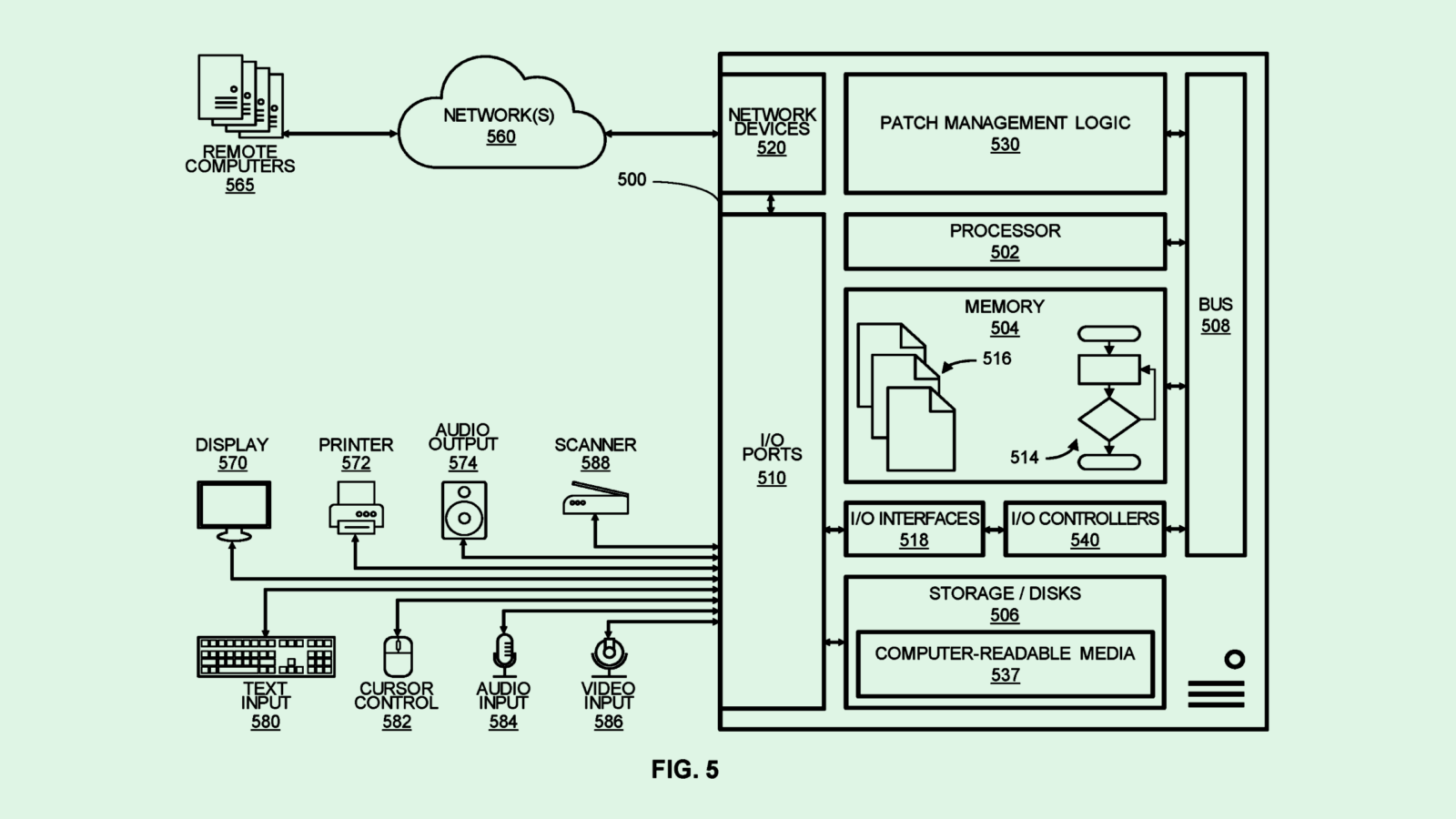Happy Monday and welcome to Patent Drop!
Today, a patent from Honda seeks to make EV charging cheaper and better for the environment despite sputtering demand for electrification. Plus: Adobe patent looks to the internet for AI training, and Oracle wants to make the IT team’s job easier.
Before we jump into today’s patents, let’s talk about aging. Did you know our cells become less efficient at creating energy as we age, leading to decreased physical stamina? To promote healthy aging, we have to approach it on the cellular level. Timeline has spent 15 years studying longevity and made a breakthrough with Mitopure®. Learn about their revolutionary product that has secured 56 patents.
Let’s check it out.
Honda’s EV Cost-Benefit Analysis
Honda wants to let you know when your EV might become an energy hog.
The automaker filed a patent application for an “energy management device” to keep drivers informed of the environmental impacts of their charging. Honda’s tech generates “visual insights” to display the cost vs. carbon footprint for different charging options.
“The visual insights may indicate a cost-saving amount of the charging cost and a carbon-saving amount of the corresponding carbon footprint,” Honda said in the filing.
Honda’s patent details a system that receives carbon emission and cost information from several charging sources and shows the fluctuation in both measures.
For example, it may be configured to receive energy information from a household power socket connected to a non-renewable power source, as well as specific EV equipment that receives power from a renewable power source.
This information would be sent to the driver periodically via notifications on their phone, aiming to dissuade them from charging with non-renewables. “The user may be motivated to select an environmental-friendly charging source between the first charging source and the second charging source, and may minimize the carbon emission while recharging the vehicles based on the selection,” Honda said.

While automakers pull back on their EV ambitions amid slowing growth, Honda is seemingly doing the opposite. The Japanese automaker has been ramping up EV production in North America, announcing in recent months an $11 billion investment in its Canadian EV operations and transforming its Ohio plant to focus on EVs.
“Demand is flattening, but it’s still growing. Honda, I think, is recognizing this,” Matt McCaffree, VP of Utility Market Development for EV charging service FLASH, said.
The company also introduced new incentives that make its 296-mile range Prologue EV cheaper to lease than the Tesla Model Y, addressing one of the biggest issues that make consumers hesitant about EVs: the price tag. A survey by AAA of around 1,200 consumers found that 59% reported cost being a major barrier to EV adoption.
But the landscape has changed vastly in recent years, especially for crossover EVs, said McCaffree. “As recently as three years ago, it was not very competitive. If you were looking for a crossover, then the (Tesla) Model Y was one of the only games in town. That’s no longer the case, so we’re going to see continued price competitiveness.”
The other major barrier is charging infrastructure, said McCaffree. Around 56% of consumers reported concerns about a lack of charging stations in their area, according to AAA, while 53% reported concerns relating to range. “It really hinges on consumer confidence in charging infrastructure, that when they buy these cars, they’ll be able to conveniently fuel them,” said McCaffree.
While patents like these may appeal to the environmentally conscious consumer, unlocking a larger demographic is all about making EV adoption easier, he added. That’ll require taking on the issue “on all fronts,” including cost to consumers, cost to manufacturers, increased charging availability, and a stronger grid. “You have to make it a no-brainer,” he said. “A win-win all around.”
Slow Down Aging on the Cellular Level
“Mitochondria are the powerhouse of the cell” – you probably learned this in grade school, but did you know that the mitochondria also play a leading role in the aging process?
By the time we turn 30, our mitochondria become less efficient at producing energy, leading to a decline in physical strength, endurance, and quality of life. Fortunately, there is a way to give your cells new life – and no, it’s not daily cold plunging or the blue-zone diet.
Meet Mitopure by Timeline, the clinically-proven solution that targets a root cause of aging by stimulating an innate cellular recycling process, mitophagy, that directly renews your energy centers and promotes healthy aging.
By simply adding Mitopure to your routine, you can experience double-digit increases in muscle strength and endurance, with no other changes to your diet or lifestyle.
Healthy aging starts in the cells. Try Mitopure® and get 30% off your first order using code PATENT30.
Adobe’s 360 view
Adobe wants to give you the full picture.
The company seeks to patent a method for generating a “360-degree object view by leveraging available images on an online platform.” As the title implies, Adobe’s tech pieces together a 3D object from photos of it at several different angles.
Adobe noted that conventional techniques for 360-degree images require taking lots of manual photographs in a refined and consistent environment. “If any of these conditions are not met, the resulting 360-degree view will have poor quality and affect user interaction with the objects,” the company said.
Adobe’s technique instead leverages “user generated or uploaded content” available on online platforms, such as social media, e-commerce marketplaces, or “any other online platform that displays images or videos and allows users to upload images or videos.”
This system collects and categorizes images of a “target image” based on different angles or perspectives, such as front, side, and top views, using a neural network trained for object detection. The system ensures to filter out “low quality images, such as images in which the object is partially visible, not visible, or blurry.”
The system picks representative images from each angle category, assigning each an “aesthetic quality score” based on things like lighting and “object emphasis.” It then pulls together a “processed object image” of each angle and stitches those images together to create a 360-degree view of the target object. Adobe’s tech performs post-processing on the images to cut out backgrounds and make them look and feel similar to one another.
The goal is to offer a way to easily create 360-degree images of objects without taking photos at every angle by using images that are already available.

Adobe is constantly looking to boost its AI game. The company has sought patents for generative video, AI-based data visualization, and summarization tools, as well as methods to make its models more robust and clear of bias. Its AI frenzy began in earnest in March last year upon the release of Firefly, its generative image model that it says is commercially usable.
But the company faced backlash in early June after a change to its terms of service told customers that it had access to their content “through both automated and manual methods,” noting that “techniques such as machine learning” may be used to analyze content to improve its service.
Adobe said last week that it would overhaul its terms of service and clarified that it will not train AI using customer data. David Wadhwani, Adobe’s president of digital media, told The Verge that the company has never trained its AI models on — or taken ownership of — customers’ work. “We have never allowed access to customer content beyond what’s legally required,” he said.
Adobe isn’t the only company that faced public scrutiny regarding AI from privacy-wary consumers. Microsoft recently delayed a Copilot feature called Recall, which essentially would screenshot your every move, after privacy advocates and security experts warned of its potential danger. Meta, meanwhile, will pause AI training using personal data of UK and European users following regulatory pressure.
The tech in this patent seems to take a different approach to train its 360-degree digital object tool, scraping publicly posted data from social media or e-commerce sites – similar to OpenAI’s web-scraping methods. While this may put untrusting customers somewhat at ease, it could impact the ability to use a tool like this for commercial purposes, as it purports customers can do with Firefly.
Oracle’s AI Comeback
Oracle may want to hand off IT work to AI.
The company is seeking to patent a system for AI-based software “patch management.” As the title implies, Oracle’s patent details a system that uses a predictive AI model to optimally target appropriate software patches.
“Deciding which patches to install or which patches take priority over others may be difficult when there are thousands of patches available at any given time,” Oracle said in the filing. “Manually identifying and applying security patches is time-consuming, labor-intensive, and error-prone.”
First, this system collects metadata related to “target assets,” such as data center servers, computers, or other network devices, within a certain IP address range, and analyzes them to find potential security vulnerabilities and the corresponding patches that would fix them.
Oracle then employs a prediction model to decipher which patches apply to the vulnerabilities on these devices, filtering out irrelevant or unnecessary patches. The refined list is then presented to the user (likely someone on an IT or security team) via a user interface, and the user can approve or reject each one to refine the list even further.
The system finally automatically creates an “electronic change request” and installs the list of approved patches.

While Microsoft, Google, and OpenAI have dominated the headlines over the past year for their eye-popping AI investments and research, Oracle has sought to keep up, too. The company announced plans earlier this year to boost generative AI capabilities within its cloud infrastructure, adding to the traditional AI it’s already employing. Patents like these may reveal the inner workings of those systems.
One of the biggest beneficiaries of the increased appetite for AI and computing power has been cloud service providers. While this is Oracle’s bread and butter, the company is constantly battling for market share against AWS, Google Cloud, and Azure. Oracle only commands around 2% of the market, according to CRN.
But the company is seemingly making a comeback after its fourth-quarter results last week revealed a backlog of to-be-fulfilled contracts that totaled $98 billion, primarily driven by cloud demand to train AI models. Its shares jumped following the report, leading to the stock’s best day since late 2021.
The company also announced a database partnership with Google Cloud, and a deal with Microsoft and OpenAI to help fill computing needs for its AI models. OpenAI said in a post on X that its relationship with Microsoft remains “unchanged,” but working with Oracle “enables OpenAI to use the Azure AI platform on OCI infrastructure for inference and other needs.”
Extra Drops
- Ford wants to go with the flow. The automaker filed a patent application for “adaptive vehicle control responsive to changing behavior.”
- Microsoft wants to authenticate your ears. The company filed a patent application for an “earbud for authenticated sessions” in computing devices.
- Nvidia wants to avoid overcorrection. The company wants to patent “disturbance compensation” for autonomous driving systems.
What Else is New?
- Apple will reportedly roll out AI features gradually over a period of several months, stretching into 2025. Some features may require users to join a waitlist.
- YouTube is experimenting with a crowdsourcing feature called Notes to offer more context in videos, similar to X’s community notes feature.
- Google Chrome is rolling out a text-to-speech feature for Android called “listen to this page.”
Patent Drop is written by Nat Rubio-Licht. You can find them on Twitter @natrubio__.
Patent Drop is a publication of The Daily Upside. For any questions or comments, feel free to contact us at patentdrop@thedailyupside.com.

